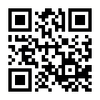文章基本信息
- 标题:Opportunities and Challenges in Embedding Diagnostic Assessments into Immersive Interfaces
- 本地全文:下载
- 作者:Chris Dede
- 期刊名称:Educational Designer
- 电子版ISSN:1759-1325
- 出版年度:2013
- 卷号:2
- 期号:6
- 出版社:International Society for Design and Development in Education
- 摘要:
Some types of technology-based learning-by-doing environments are tightly structured in several respects. The phenomenon to be studied is clearly defined, without extraneous or unrelated information clouding the situation. Also, at each decision point, the range of possible actions is limited to a few alternatives, all directly related to the phenomenon rather than possibly off-task. Well-understood methods are available for collecting and analyzing data about student behaviors in these environments.
In contrast, this paper focuses on less well understood, immature methods for the more problematic challenge of embedding diagnostic assessments in open-ended learning experiences created by immersive interfaces.

